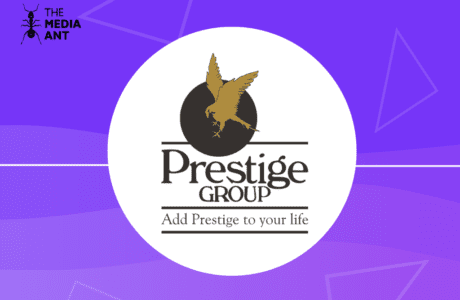Advertising Elasticity of Demand (AED) is a crucial metric that gauges how sensitive the demand for a product is to changes in advertising expenditure. In simpler terms, it helps businesses understand the effectiveness of their advertising campaigns in driving sales. By analyzing AED, companies can make informed decisions about their marketing budgets and strategies.
What is AED and Why is it Important for Marketing Strategies?
AED measures the percentage change in the quantity demanded of a product resulting from a one percent change in advertising spending. A higher AED indicates that advertising has a significant impact on demand, while a lower AED suggests minimal influence.
Why is AED Important?
Understanding AED is vital for marketers because it:
- Optimizes Budget Allocation: By knowing how responsive demand is to advertising, companies can allocate their marketing budgets more efficiently, investing in campaigns that yield the highest returns.
- Informs Strategic Decisions: AED insights guide decisions on whether to increase or decrease advertising efforts based on their anticipated impact on sales.
- Assesses Campaign Effectiveness: Evaluating AED helps in determining the success of advertising campaigns and in making necessary adjustments for future initiatives.
Basics of Advertising Elasticity of Demand
What Does AED Measure?
AED quantifies the responsiveness of consumer demand to changes in advertising expenditure. Specifically, it measures the percentage change in the quantity demanded of a product in response to a one percent change in advertising spending. This metric helps businesses understand the direct impact of their advertising efforts on sales volume.
The Formula for Advertising Elasticity of Demand
The formula to calculate AED is:
Example Calculation
Suppose a company increases its advertising expenditure from ₹20 lakh to ₹25 lakh (a 25% increase), and as a result, the quantity demanded for its product rises from 10,000 units to 12,000 units (a 20% increase).
Using the AED formula:
AED=20%25%=0.8text{AED} = frac{20%}{25%} = 0.8AED=25%20%=0.8
An AED of 0.8 indicates that for every 1% increase in advertising spending, the quantity demanded increases by 0.8%.
Factors Affecting Advertising Elasticity of Demand
Several factors influence AED:
- Product Type: Necessities often have lower AED because consumers will purchase them regardless of advertising, while luxury or non-essential items may have higher AED as advertising can significantly influence consumer desire.
- Market Saturation: In highly saturated markets, increased advertising may have a diminished effect on demand, leading to lower AED.
- Brand Loyalty: Strong brand loyalty can result in lower AED, as loyal customers are less influenced by advertising. Conversely, in markets with low brand loyalty, AED may be higher.
- Competitor Advertising: If competitors are also increasing their advertising efforts, the overall impact on a single company’s demand may be reduced, affecting AED.
- Economic Conditions: During economic downturns, consumers may be less responsive to advertising, leading to lower AED. In contrast, in a booming economy, AED might be higher as consumers are more willing to spend.
Examples of variation in AED based on the type of product/services
1. AED in Seasonal Products
Application: Seasonal products, such as holiday decorations or winter apparel, experience fluctuating demand throughout the year. Understanding AED in this context helps businesses optimize advertising spend during peak seasons.
Example: A company selling Christmas ornaments may find that increasing advertising expenditure in November leads to a significant rise in sales, indicating a high AED during this period. Conversely, the same advertising effort in June might yield minimal impact, reflecting a low AED.
2. AED in Luxury vs. Necessity Goods
Application: The nature of a product—whether it’s a luxury or a necessity—affects its AED. Luxury goods often have higher AED as consumers’ purchasing decisions are more influenced by advertising, whereas necessity goods may exhibit lower AED.
Example: A luxury watch brand might observe that a 10% increase in advertising spend results in a 12% increase in demand (AED = 1.2), while a staple food product like rice might see only a 2% increase in demand for the same advertising increase (AED = 0.2).
3. AED in New Product Launches
Application: For new products entering the market, AED can indicate how effectively advertising generates initial consumer interest and adoption.
Example: A tech startup launching a new gadget might invest heavily in advertising and discover a high AED, suggesting that their promotional efforts are successfully driving consumer interest and sales.
4. AED in Different Media Channels
Application: Analyzing AED across various advertising channels (e.g., social media, television, print) can help determine which platforms yield the highest return on investment.
Example: A fashion retailer might find that advertising on social media platforms has a higher AED compared to traditional print media, leading them to allocate more budget to digital campaigns.
5. AED in Price Promotions
Application: Combining advertising with price promotions can influence AED, as consumers may respond more strongly to ads highlighting discounts.
Example: A supermarket chain advertises a limited-time discount on a popular product and observes a substantial increase in sales, indicating a high AED during the promotional period.
By exploring AED in these diverse contexts, businesses can gain a comprehensive understanding of how advertising impacts demand under various circumstances, enabling more strategic and effective marketing decisions.
Practical Applications of AED in Marketing
Understanding AED enables businesses to make informed decisions in several key areas:
- Setting Optimal Advertising Budgets Application: By analyzing AED, companies can determine the most effective level of advertising expenditure to achieve desired sales targets.
Example: A new beverage company discovers that its AED is 1.5, indicating that a 10% increase in advertising spend could lead to a 15% increase in demand. Recognizing this high elasticity, the company decides to boost its advertising budget to capitalize on the potential sales growth. - Tailoring Marketing Strategies Application: Products with varying AEDs require different marketing approaches. High AED products benefit more from increased advertising efforts, while low AED products might need alternative strategies.
Example: An established detergent brand finds its AED to be 0.3, suggesting that advertising has a limited impact on demand. Instead of increasing ad spend, the company focuses on enhancing product features and competitive pricing to attract customers. - Evaluating Campaign Performance Application: By monitoring AED before and after campaigns, businesses can assess the effectiveness of their advertising initiatives.
Example: A tech startup launches a digital marketing campaign and observes that its AED increased from 0.8 to 1.2 post-campaign. This improvement indicates that the advertising efforts have become more effective in driving demand, validating the campaign’s success.
AED for Market Leaders vs. Challenger Brands
Market Leaders (Established Brands)
- AED is usually lower because these brands already have strong brand recognition, established customer loyalty, and significant market share.
- A 10% increase in advertising may not lead to a proportional increase in demand since these brands are already at the top of consumer minds.
- Their advertising strategy often focuses more on brand recall, product differentiation, and maintaining dominance rather than acquiring new customers.
Challenger Brands (New Entrants & Smaller Brands)
- AED is generally higher because advertising plays a crucial role in building awareness, attracting new customers, and establishing a market presence.
- A 10% increase in advertising spend might lead to a significant increase in demand as more consumers discover the product.
- Challenger brands need aggressive advertising strategies to compete with incumbents, including influencer marketing, social media campaigns, and price promotions.
Example:
- Coca-Cola, a market leader, may see an AED of 0.2–0.5 since brand awareness is already high.
- A new soft drink brand entering the market might have an AED of 1.5 or more, as advertising directly impacts consumer trial and adoption.
AED in Surrogate Advertising
Surrogate advertising is a strategy employed by companies to promote products that are legally restricted or banned from direct advertising, such as alcohol and tobacco. This approach involves marketing a substitute product under the same brand name, thereby maintaining brand visibility and consumer recall without directly advertising the restricted product.
(Source:en.wikipedia.org)
Impact on Advertising Elasticity of Demand (AED):
- Indirect Influence on Demand:
- Mechanism: Surrogate advertising aims to keep the brand name in consumers’ minds by promoting related or unrelated products, such as music CDs, soda, or water, under the same brand associated with the restricted product.
(Source: analyticssteps.com) - AED Implication: While the surrogate product itself may not generate significant demand, the primary goal is to sustain or enhance the demand for the restricted product. This indirect approach can make it challenging to measure AED accurately, as the advertising does not directly promote the product in question.
- Mechanism: Surrogate advertising aims to keep the brand name in consumers’ minds by promoting related or unrelated products, such as music CDs, soda, or water, under the same brand associated with the restricted product.
- Challenges in Measuring AED:
- Complex Attribution: Determining the effectiveness of surrogate advertising on the demand for the restricted product involves complex attribution models. It’s difficult to isolate the impact of surrogate ads from other factors influencing demand.
- Lower Measurable AED: Since the advertising promotes a different product, the immediate elasticity (response in demand) for the surrogate product might be low. However, the long-term effect on the restricted product’s demand could be more substantial but harder to quantify.
- Strategic Considerations:
- Brand Recall Maintenance: The primary objective is to maintain brand recall and loyalty, ensuring that consumers continue to associate the brand with the restricted product.
- Regulatory Compliance: Surrogate advertising allows companies to navigate legal restrictions while keeping their brand relevant in the market.
Example:
A well-known whiskey brand in India promotes its brand through music CDs and soda under the same brand name. While the demand for music CDs or soda may not significantly increase, the advertising ensures that the brand remains prominent in consumers’ minds, indirectly supporting the demand for their whiskey products.
(Source:analyticssteps.com)
In surrogate advertising, the direct measurement of Advertising Elasticity of Demand becomes complex due to the indirect nature of the promotion. While the AED for the surrogate product may be low, the strategy serves to uphold brand recognition and indirectly sustain or boost demand for the restricted product. Marketers should consider these nuances when evaluating the effectiveness of surrogate advertising campaigns.
The Impact of Viral Marketing on Advertising Elasticity of Demand (AED)
When your content goes viral organically, it means that it is being widely shared and disseminated without paid promotion. This organic virality can significantly impact the Advertising Elasticity of Demand (AED) for your product or service.
Impact on AED:
- Enhanced Brand Awareness:
- Effect: Viral content increases brand visibility and awareness among a broader audience.
- AED Implication: As more consumers become aware of your brand through organic sharing, the baseline demand for your product may increase. This heightened demand can lead to a decrease in AED, as additional advertising efforts may yield diminishing returns compared to the substantial impact of the viral content.
- Perceived Value and Credibility:
- Effect: Content that goes viral often carries a sense of credibility and trust, especially when shared by peers or influencers.
- AED Implication: The increased trust and perceived value can make consumers less sensitive to advertising efforts, potentially lowering AED since the organic content has already influenced their purchasing decisions.
- Diminished Marginal Returns on Advertising:
- Effect: Once content has achieved viral status, the market may become saturated with your brand message.
- AED Implication: In such cases, additional advertising expenditures may result in a lower AED, as the incremental demand generated by further advertising diminishes.
Considerations:
- Sustainability: While viral content can provide a significant short-term boost, it’s essential to develop strategies to maintain consumer interest over time.
- Measurement Challenges: Quantifying the exact impact of organic virality on AED can be complex, as it involves isolating the effects of unpaid content from other marketing efforts.
In summary, when your content goes viral organically, it can lead to increased demand and brand recognition, potentially reducing the effectiveness of subsequent advertising efforts as measured by AED. It’s crucial to balance organic and paid strategies to optimize overall marketing effectiveness.
Strategies to Improve Advertising Elasticity of Demand
Enhancing AED involves implementing targeted strategies to make advertising more effective:
- Enhance Advertising Content Strategy: Develop compelling, relevant, and creative advertisements that resonate with the target audience.
Example: A smartphone manufacturer creates an emotionally engaging ad showcasing real-life stories of how their devices connect people. This approach leads to increased consumer interest and a higher AED. - Target Appropriate Audiences Strategy: Focus advertising efforts on consumer segments most likely to respond positively.
Example: A sports apparel brand identifies a growing interest in yoga among millennials. By targeting this demographic with tailored ads featuring yoga enthusiasts, the brand experiences a significant boost in demand, reflecting an improved AED. - Leverage Multiple Channels Strategy: Utilize a mix of advertising platforms to maximize reach and engagement.
Example: A new food delivery service employs a combination of social media ads, influencer partnerships, and email marketing. This multi-channel approach broadens their audience reach, resulting in a higher AED as more consumers become aware of and use the service. - Monitor Competitor Activities Strategy: Stay informed about competitors’ advertising strategies to identify opportunities and threats.
Example: A beverage company notices a competitor’s decrease in advertising due to budget cuts. Seizing the opportunity, the company increases its own advertising efforts, attracting the competitor’s customers and enhancing its AED. - Adjust Advertising Frequency Strategy: Find the optimal balance in ad frequency to maintain consumer interest without causing fatigue.
Example: An online streaming service tests different ad frequencies and discovers that users respond best to seeing an ad three times per week. Adjusting to this frequency leads to higher engagement rates and an improved AED.
Advertising Elasticity of Demand in B2B Marketing
In Business-to-Business (B2B) marketing, the traditional formula for Advertising Elasticity of Demand (AED) may require adaptation due to the unique characteristics of B2B transactions, such as extended sales cycles, higher-value purchases, and the significant role of sales teams. In this context, measuring AED based solely on the percentage change in quantity demanded may not fully capture the effectiveness of advertising efforts.
Adapting AED Measurement in B2B Marketing:
- Focus on Lead Generation:
- Rationale: In B2B markets, advertising often aims to generate qualified leads rather than immediate sales, given the longer decision-making processes involved.
- Adapted Metric: Instead of measuring AED based on changes in sales volume, businesses can assess the responsiveness of lead generation to changes in advertising expenditure.
2. Incorporate Sales Team Contributions:
- Rationale: The sales team’s efforts are pivotal in converting leads to sales in B2B settings. Therefore, AED analysis should account for the interplay between advertising and sales activities.
- Approach: Evaluate the combined effect of advertising and sales initiatives on demand by integrating metrics such as lead conversion rates and sales team performance into the AED assessment.
Example Application:
A B2B software company increases its advertising expenditure by 20% to promote a new enterprise solution. Following this campaign, the company observes a 25% increase in the number of qualified leads. Applying the adapted AED formula:
An AED of 1.25 indicates that for every 1% increase in advertising spending, there is a corresponding 1.25% increase in lead generation, reflecting a positive and elastic response.
By modifying the AED formula to focus on lead generation and considering the integral role of sales teams, B2B companies can more accurately assess the impact of their advertising expenditures. This tailored approach enables businesses to optimize their marketing strategies and resource allocation effectively.
Importance of AED in Media Planning
Advertising Elasticity of Demand (AED) is a crucial metric that measures how sensitive the demand for a product is to changes in advertising expenditure. Understanding AED is essential for effective media planning, as it guides businesses in selecting the optimal media mix, allocating budgets, strategizing seasonal advertising, and assessing channel effectiveness.
1. Optimal Media Mix
AED analysis helps determine which advertising channels will yield the highest impact on demand.
- High AED: Products with high AED benefit more from dynamic and immediate advertising channels.
Example: A new tech gadget company discovers that its AED is high, indicating that consumers are highly responsive to advertising. Consequently, the company prioritizes digital platforms like social media and search engine ads to quickly boost demand. - Low AED: Products with low AED may require consistent exposure through traditional channels to build brand recognition over time.
Example: A well-established household cleaning product has a low AED, suggesting that demand doesn’t significantly increase with additional advertising. The company focuses on maintaining a presence through TV and print ads to reinforce brand loyalty.
2. Budget Allocation
Understanding AED allows media planners to distribute advertising budgets more effectively across various channels.
Example: A fashion retailer analyzes AED across different platforms and finds that social media advertising has a higher AED compared to radio. As a result, the retailer allocates a larger portion of its budget to social media campaigns to maximize demand responsiveness.
3. Seasonal Advertising Strategies
AED insights inform businesses about the optimal timing for advertising efforts.
Example: A company selling fitness equipment identifies that its AED increases during the New Year period when consumers are more inclined to purchase fitness products. The company intensifies its advertising efforts during this season to capitalize on heightened demand sensitivity.
4. Channel Effectiveness
By evaluating AED across different channels, businesses can identify which platforms are most effective for their products.
Example: A beauty brand discovers that its AED is higher for influencer marketing campaigns than for traditional print ads. Consequently, the brand shifts its advertising investments towards collaborations with social media influencers to drive demand more effectively.
Incorporating Advertising Elasticity of Demand (AED) into your media planning strategy is essential for optimizing advertising effectiveness. The Media Ant offers comprehensive media planning assistance to help businesses navigate this process efficiently. With their expertise, you can develop customized media plans that align with your AED insights, ensuring that your advertising efforts are both impactful and cost-effective.
To explore how The Media Ant can assist in crafting a media plan tailored to your AED analysis, visit their planning platform: The Media Ant Planning Tool.
Conclusion
Advertising Elasticity of Demand is a vital metric for businesses aiming to understand the impact of their advertising efforts on product demand. By analyzing AED, companies can make informed decisions about budget allocation, campaign strategies, and overall marketing effectiveness, leading to optimized sales and improved ROI.
FAQs
How is AED different from price elasticity?
AED measures demand response to advertising, whereas price elasticity measures response to price changes.
What does a high AED value indicate?
A high AED means that advertising significantly influences demand, common for non-essential or luxury products.
What factors affect Advertising Elasticity of Demand?
Product type, market saturation, brand loyalty, competition, and economic conditions.
What are some examples of products with high AED?
Fashion brands, tech gadgets, luxury goods, streaming services, and new FMCG products.
What are the 4 types of elasticity of demand?
Price Elasticity of Demand (PED)
Income Elasticity of Demand (YED)
Cross Elasticity of Demand (XED)
Advertising Elasticity of Demand (AED)





